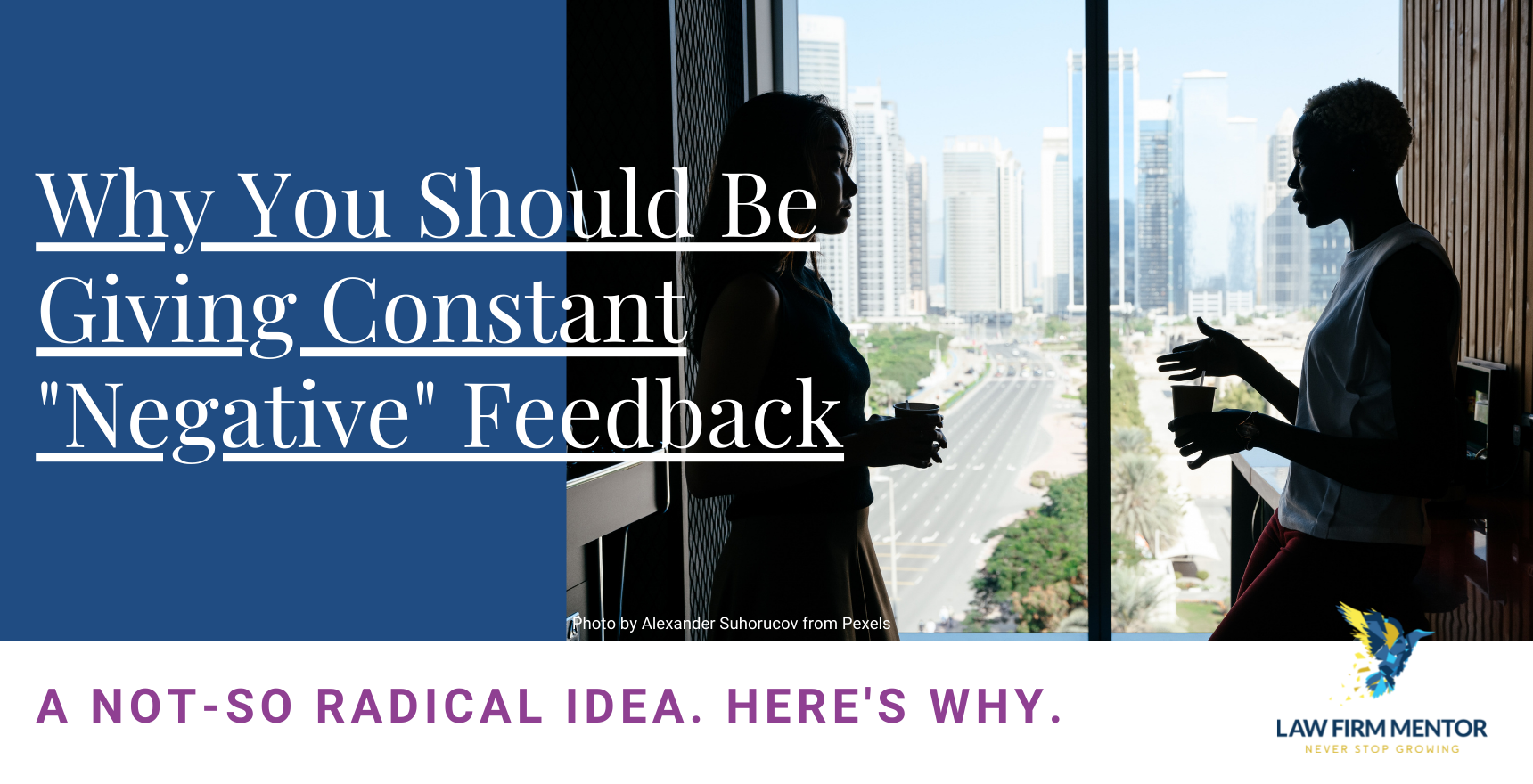WHY YOU SHOULD BE GIVING CONSTANT “NEGATIVE” FEEDBACK
We can all agree that, as an employer, there’s just no getting around providing feedback to our employees when things go wrong. That’s the nature of the beast when running a business. So if it’s something we have to do, we might as well learn how to do it in a way that best serves ourselves, our business, and our team, right? What I’ve found to be the best approach is this: Provide constant, “negative” feedback. Before you completely balk at the idea, I’ll tell you what I mean.

Photo by Alexander Suhorucov from Pexels
Let’s Define “Constant Negative Feedback”
Most of us don’t like giving or receiving negative feedback because there is this idea of rejection baked into it. So let’s clarify:
Negative feedback = Every time something goes wrong, you’re going to stop and have a conversation with your employee about it.
Constant feedback = You actively provide people your perspective on how they are doing on a consistent, ongoing basis. (Hint: They should not be hearing for the first time in an annual review that their performance is less than satisfactory in some critical area.)
What I DON’T mean is that you should rant at your employees on a regular basis. That’s not what this is.
OK, so now that we’ve defined “negative” feedback and hopefully made it feel less negative, let’s look at why you may still be resistant.
Why We Resist Negative Feedback
As an employer, it can feel extremely daunting to address mistakes and errors head-on if we hold the following beliefs:
- I am inflicting pain by providing feedback
- I am uncomfortable with the emotional responses my employees may have
- I feel responsible for the negative emotions a conversation triggers in my employees
- I feel empathy for my employees because I’m projecting my own response to negative feedback onto them
So, the first step is to work on our own resistance by challenging these beliefs and getting comfortable with being uncomfortable. Yes, these conversations can trigger feelings of unworthiness or failure in our employees. They may have an internalized belief that mistakes mean they are a bad person and they will experience a negative consequence.
These challenges don’t mean we avoid feedback altogether. It means we factor them into our approach.
How to Get Comfortable With Giving Feedback
As with most things in life and business, we can start breaking down our walls of resistance by actively managing our thoughts. This can look like:
- Ensuring that your employees hear and understand that it’s the behavior you’re addressing, not the person.
- Remembering that you are only an impetus for the feelings your employees already have. When a person experiences your message negatively, that doesn’t mean that you have done something negative to them.
- Getting comfortable with being present for someone’s negative response. This will enable you to stick to the message you need to communicate, with the added benefit of your employee seeing that their negative response does not mean you’re going to change what you have to say..
- Remembering the rewards waiting for both of you on the other side. When people are encouraged to learn from their mistakes and grow, you create a culture of people owning their work and constantly improving, not hiding their mistakes and stagnating.
How To Frame Your Feedback
Ok, now that we’re warming up to the idea that giving negative feedback is actually a great thing, how the hell do we do it?
The idea is to reframe your negative feedback even before you give it so that people receive it as a growth opportunity, and not anything negative at all. It’s not a hand-slap, it’s a coaching conversation. You can slowly start to shift this experience by being consistent and asking the right questions when giving feedback.
Here are some questions to ask:
- What went wrong here?
- Why do you think it happened this way?
- What beliefs and what thoughts were leading you to conclude that this was the right course of action?
- What beliefs do we now need to rewire so that you have a different frame of reference for the future?
- How can we make sure that you learn from this lesson so that you can more easily make decisions based on the beliefs that we now have ensured that you have?
- How do we make sure that we learn from this, not just how to do this one activity better next time, but also how to take all of that learning and positive growth that you’re going to have from this and instill it in other areas of the business?
This will enable your employees to see how their thinking led them down the wrong path. In this way, when they start thinking in a similar manner in the future, they can course-correct before a negative consequence has to happen.
Do I Have Time For This?
You’re probably thinking, oh no, do I have to have one of these conversations every day? Honestly, you may have to have them more often at first as you introduce this approach to your firm. But over time, these conversations should happen less and less.
How?
You hire the right people.

Photo by Andres Ayrton from Pexels
The right people won’t be making mistakes so often that you need to do these kinds of coaching conversations every day. The right people are invested in growing after every mistake. The right people aren’t just willing to do the job of the day, they’re willing to grow into who they need to become in order to be effective in the role in the future.
Remember: If you’re growing a business, you are growing yourself. And as you grow yourself through the trials and tribulations of growing a business, you are also going to outgrow your employees if they’re not willing to go through it with you to get to the other side.
Want to make sure you’re hiring the right people in the first place? Check out this episode of the Crushing Chaos with Law Firm Mentor podcast.
Looking for guidance and support? Schedule a no-pressure, 15-minute call with our growth strategist and let’s talk.


